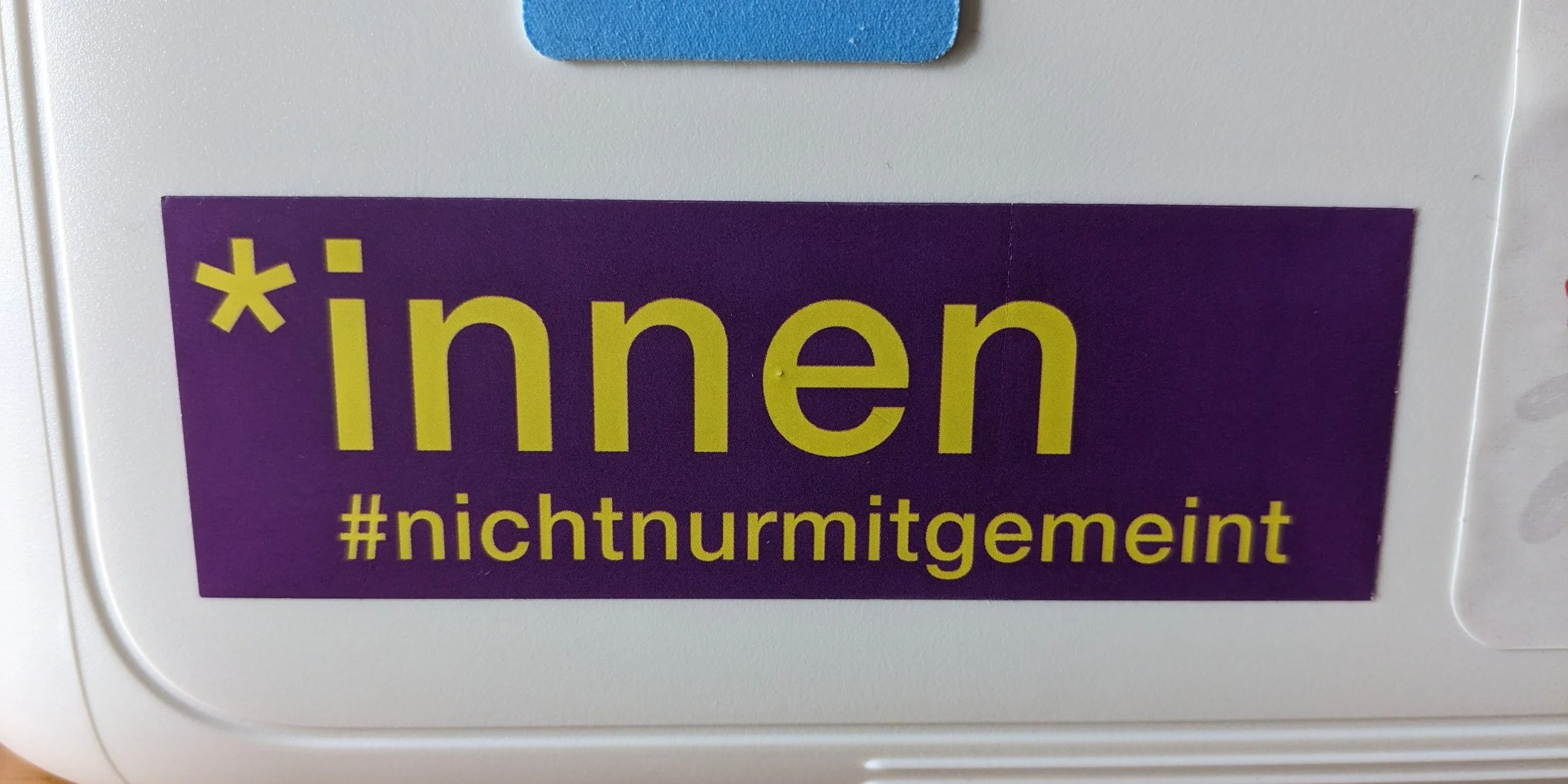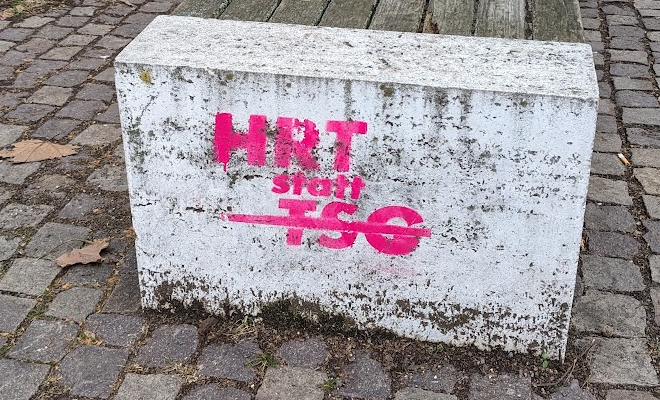Ge-schlecht: Nonbinary (In)visibility in German daily life
Photo Credit: Jam Greenland
“Mr. Greenland?” My doctor asks as she sticks her head into the waiting room, then spots me. “Sorry, Miss Greenland.” This exchange happened to me countless times when I lived in Leipzig during my Year Abroad. I’ve been out as nonbinary for the whole of my adult life and I knew that, when I had to set up a life in a foreign country, I would have to navigate being an out nonbinary person within a binary language and culture, on top of trying to make sense of residency permits and banking paperwork.
Although German is a language with three grammatical genders (Maskulinum, Femininum, and Neutrum), it’s considered rude or dehumanizing to use the neuter form for people. As a result, many feminists and LGBTQ+ activists have sought ways to make the language more inclusive, moving away from the generic masculine and gender-binary forms. One of these solutions is inserting a star (*) or colon (:) between the masculine root and feminine ending. This practice, known as ‘gendern,’ has become a highly controversial topic in the German-speaking world. Earlier this year, the Free State of Bavaria banned the use of gender-inclusive language in administration, schools, higher education, and official websites, claiming it is "ideologically driven." Similarly, the Free State of Saxony announced that pupils using gender-inclusive language would be marked down. Although these debates and the subsequent backlash aim to make all gender identities visible, I’ve often felt more invisible as a result. The focus tends to be on making singular or plural nouns neutral for hypothetical people, often leaving little space for individuals to innovate language in a way that fits their identity.
Photo Credit: Jam Greenland
A notable example is in job advertisements. It’s become customary to add (m/w/d) to job listings for inclusivity, even though the listing itself often uses binary forms that exclude nonbinary people (e.g. ‘Fachfrau’ (female specialist) and ‘Fachmann’ (male specialist)). This addition of ‘d’ can feel like an afterthought, and many forget that nonbinary people could be applying for the position. On a positive note, the Self-Determination Law was passed in April and took effect on November 1st. This law allows trans and nonbinary people to legally change their name and gender marker (to male, female, other, or remove it entirely from their identification). While this is an essential and long-fought-for piece of legislation, it remains unclear how it will impact public awareness and understanding of nonbinary people.
Photo Credit: Jam Greenland
Another challenge I encountered in Germany was the lack of a gender-neutral form of address. In the UK, I typically use ‘Mx.’ Although it’s not universally recognized on all forms, it’s established enough to be used in daily life. In German, however, the absence of an equivalent is particularly problematic, as it’s uncommon to address someone by their first name in formal situations unless you’re familiar with them. While it’s not always a mandatory field on forms, I often leave the title blank, leading to the amusing situation where some of my letters are addressed to ‘Frau (Miss/Ms) Greenland’ and others to ‘Herr (Mr) Greenland.’
Photo Credit: Jam Greenland
When I moved to Germany, I was struck by how differently the discourse around gender identity plays out in different cultural contexts. In Anglophone countries, discussions about transgender people often focus on pronouns and their importance, as well as when and how to disclose them. In contrast, in Germany, pronouns are not commonly shared in email signatures or introductions, and the public discourse primarily focuses on ‘gendern.’ There is no established third-person singular neutral pronoun equivalent to ‘they,’ and people of unknown gender are typically referred to using masculine pronouns (e.g., “someone left his bag here”). Nonbinary Germans have come up with various solutions, such as using the pronoun ‘dey.’ This pronoun is often used in translations of English texts where characters use ‘they/them’ pronouns. However, it’s not well-known outside queer circles, and its declensions are a bit impractical. Given the ubiquity of English in LGBTQ+ media, some nonbinary Germans use a binary pronoun in German but prefer ‘they/them’ in English or simply disclose ‘they/them’ as their pronouns. A common workaround is avoiding overtly gendered language altogether, such as using the word ‘Person’ or rephrasing sentences. For example, “Ich arbeite in einem Restaurant” (I work in a restaurant) is used instead of “Ich bin Kellner/in” (I am a waiter/waitress), and many nonbinary people will say ‘keins’ (‘none’) when asked for their pronouns.
Coming from an English-speaking context, where fewer nouns are overtly marked for gender, I found it challenging to adjust to how I would express my gender identity through language in Germany. The process of balancing what feels affirming while avoiding constant explanations was difficult. Even with German words that could work as direct equivalents of what I use in English, I found that my preferences differed, and misgendering and gender euphoria felt different when I had to mentally translate what someone was saying.
Reflecting on this now, several months after returning from Germany and during Transgender Awareness Week, I realize that the awareness of nonbinary people—beyond theoretical discussions of ‘gendern’—was lacking. Despite this, I have greatly valued the opportunity to engage with the discourse around gendered language from a different perspective and to explore new ways of understanding and expressing my own gender identity.
Sources



